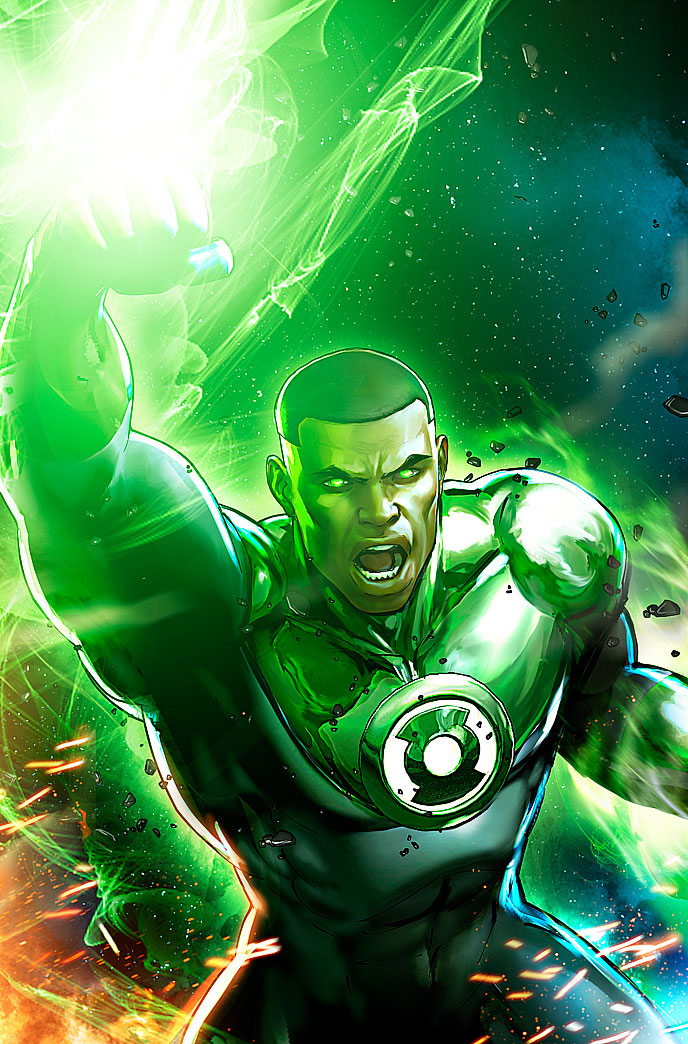

He reaches one particularly difficult and dark place he had managed to repress for most of his life. In Green Lantern #147, he sits with his therapist and recounts all of his past sins. One issue illuminates John’s role as a Black man in comics and how he pushes Black narratives further. For a generation of people to grow up and expect John to always be their Green Lantern was important and reflective of why we must make such decisions in various types of media. The decision to use him in animation, which was able to reach many more people, meant changing the status quo and refusing to only let superhero media cater to Whiteness. His portrayals cannot be fully divorced from his history in the comics, as both help to highlight his position in the public eye as DC’s likely most prominent hero. Part of John’s value comes from his presence in the Justice League and Justice League Unlimited animated series. I’m grateful for these types of narratives because they address issues of racism head on, rather than simply putting them in Very Special Issues for us to immediately unpack and then leave alone. It’s important that these feelings were captured within a Black superhero, though it lead to points of contention between him and others. Off the heels of the Civil Rights Act and a burgeoning presence of Black people, DC seems to have decided to capitalize on Black sentiment of the time. As an outspoken Black man, John faced varying forms of racism in his early years of publication. John’s initial appearances were important for addressing the effects and impact of anti-Black racism. He is currently in Green Lantern: The Lost Army as one of the lead characters. As the universe underwent a major change post- Flashpoint, John would remain a Lantern in the New 52 and continue to hold his title as one of the honorable Green of Sector 2814. Recovering his ambulatory abilities, John would later play a major role in the Sinestro Corps War, Blackest Night, in which dead character were reanimated with Black Power Rings, Brightest Day, and the War of the Green Lanterns. Both Hal Jordan and Kyle Rayner would heal him, only for John to find that his paralysis was psychosomatic in nature, created by the guilt of losing his sister in a car crash. While he rose to leadership in this new organization, he was later rendered paralyzed by Grayven during his tenure as a Darkstar.

He witnessed Hal Jordan as Parallax destroying the Green Lantern Corps during the Emerald Twilight storyline, later becoming a Darkstar. Through his time as a Lantern, John faced the monumental guilt and grief of failing to save the planet Xanshi, home of Fatality, and the loss of his wife, Green Lantern Katma Tui.ĭespite his setbacks, John has been present to help dispel a number of galactic threats. Race was a common part of his narrative as he cemented his role as a Lantern, but also a hero within sector 2814. He came on the scene as assertive, which you can imagine went over well in the 1970s for a Black man.
.jpg)
However, John’s first true appearance was in Green Lantern #87 in 1972 as a back-up for Hal Jordan. He was wheelchair bound, and I wouldn’t find out until years later that this was him and why he was temporarily disabled. I didn’t know it at the time, but my first introduction, which would also be my first comic book, to John was in a Green Lantern comic with Kyle as the main star. Many people around my age saw him as Black and were willing to fight to make sure the world understood that. So many people didn’t consider their Green Lantern to be White, to be Hal Jordan. This was humorous to me, as by this time I was in college and understood more about continuity, but it was heartwarming. I wasn’t the only one with this sentiment, as many people decried the casting of Ryan Reynolds for the Green Lantern film. To me, it truly made no difference, but I was excited to see him in action and for a long time he was my idea of Green Lantern. I had some familiarity with the Green Lantern around the time, as I had asked for Green Lantern comics for Christmas, and I knew he was ‘White’ but also didn’t bat an eyelash when he turned out Black in the Justice League series. Like many people growing up in the 90’s, my introduction to John Stewart was the Justice League cartoon. So, let’s discuss the Green Lantern John Stewart.

Whether you first encountered him on the page or in the cartoons, he is a remarkable character and there’s a lot to unpack. With each new column, I realize how much more complex these characters are and today’s character very much fits that description. It’s time for another Representation and Health Black History Spectacular article and I’m particularly ready to jump into this one.


 0 kommentar(er)
0 kommentar(er)
